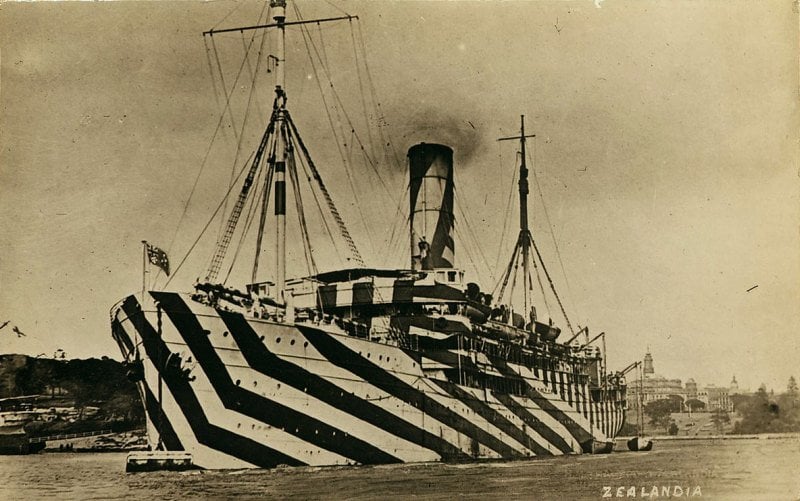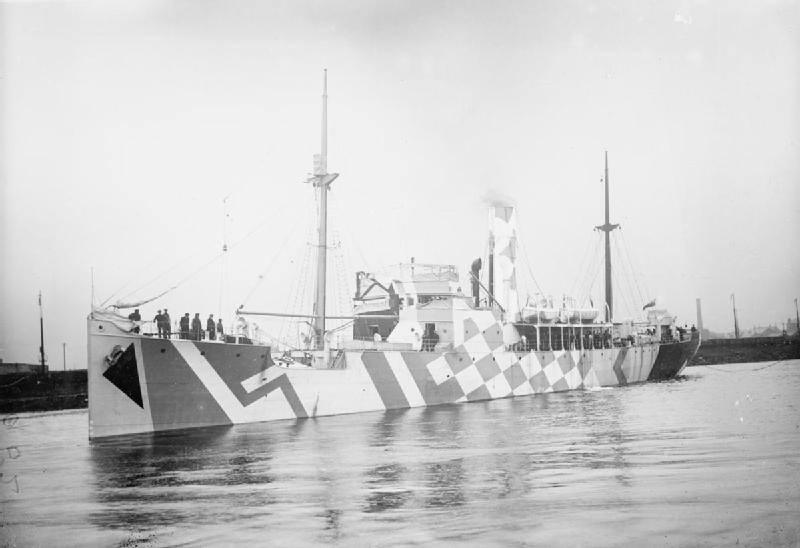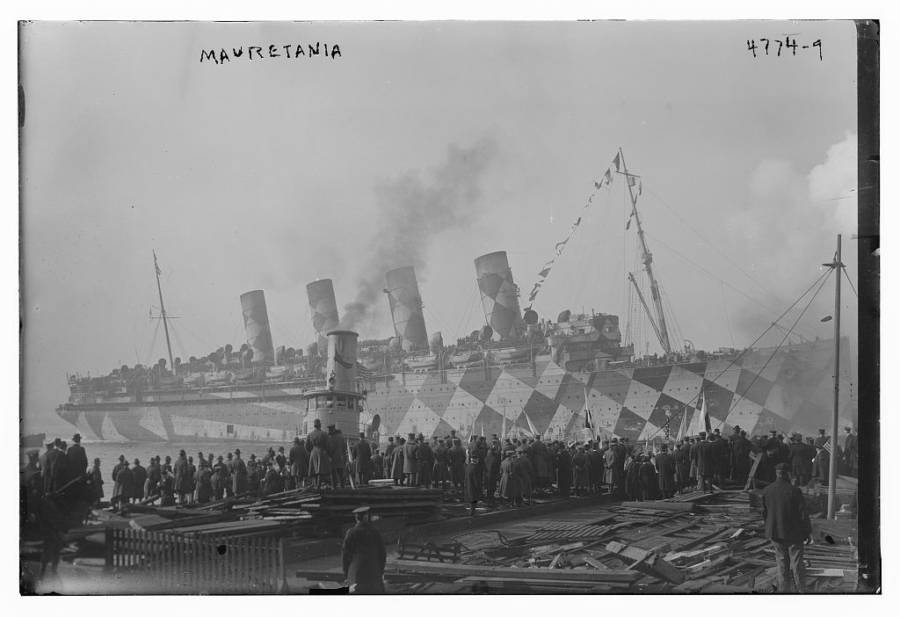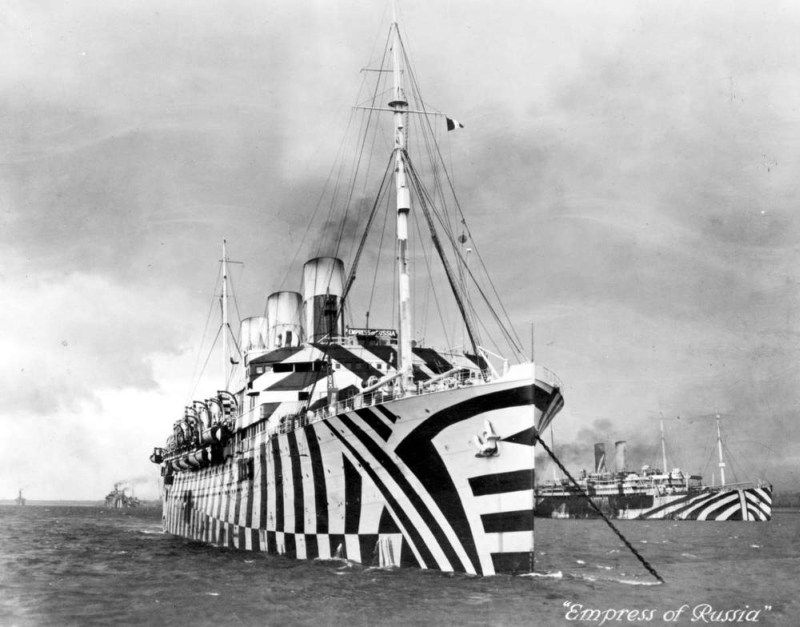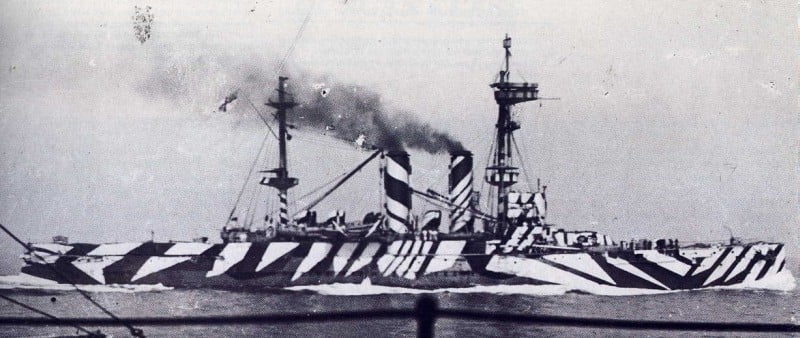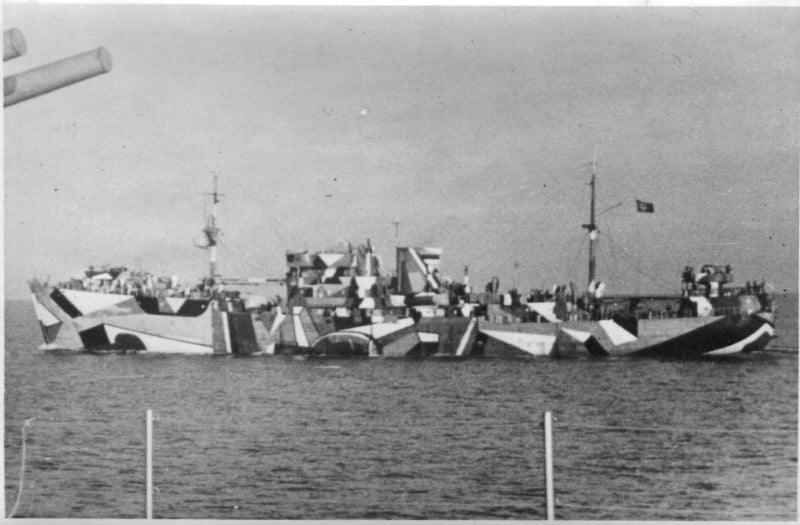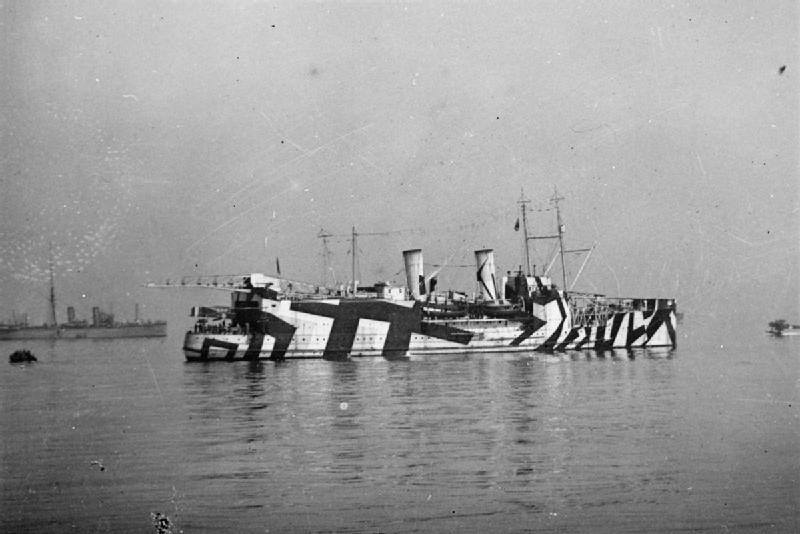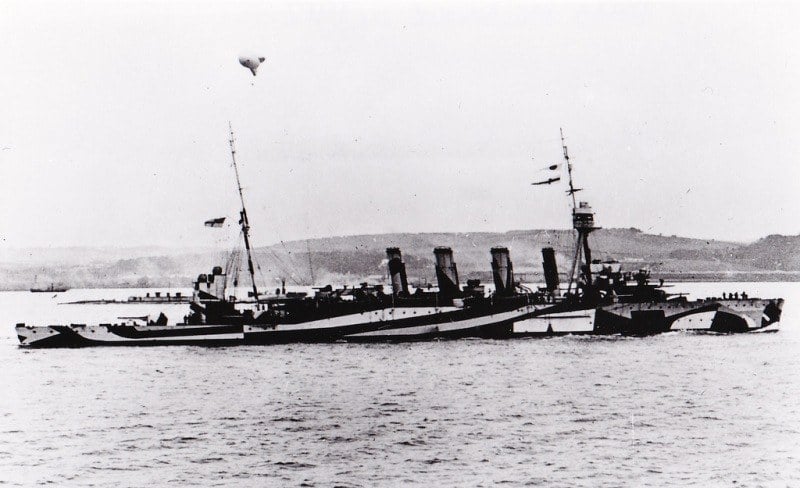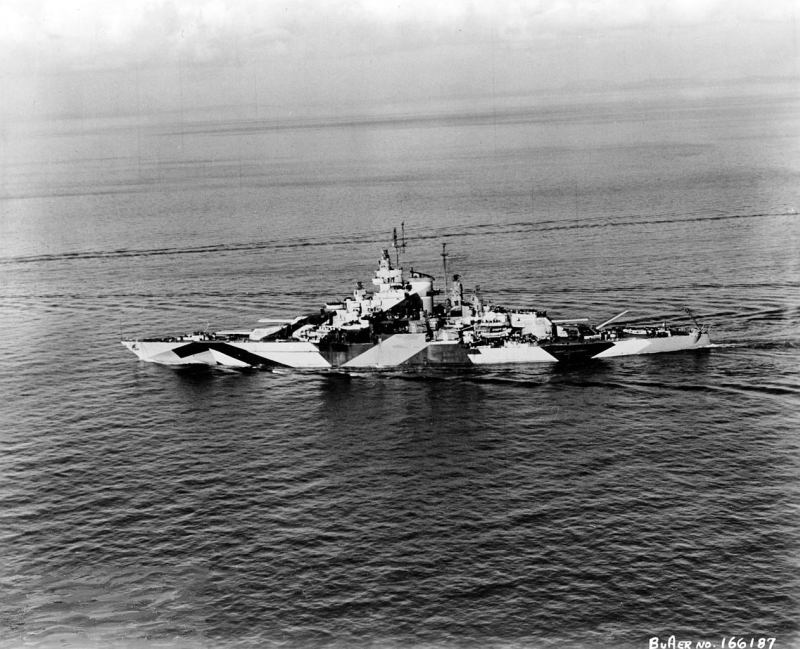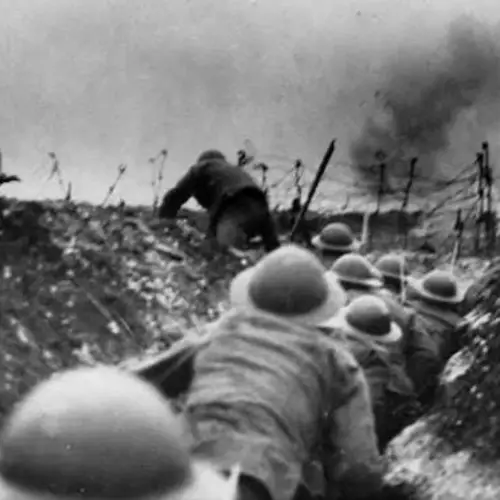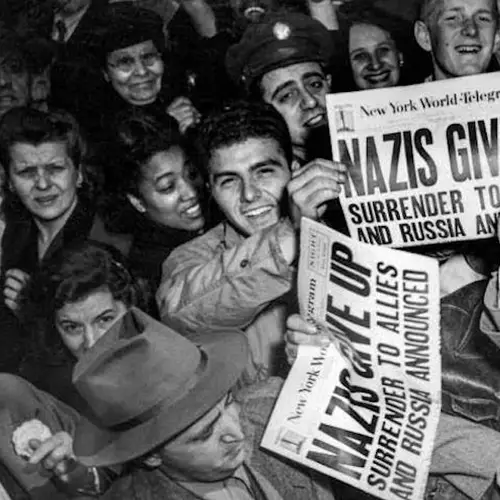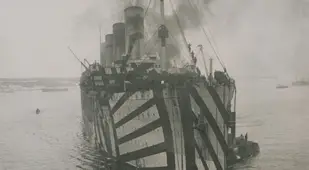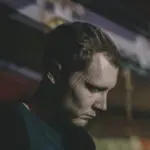During World War I, an artist in Britain suggested painting ships in bright colors and eye-catching prints to confuse German U-boats trying to track their movements — and it actually worked.
At the outset of World War I, the British Royal Navy had a problem: Their ships kept being targeted and destroyed by Germany's fleet of submarines, also known as U-boats. Royal Naval Volunteer Reserve officer and artist Norman Wilkinson wanted to change that, so he proposed that the Navy try something new and unexpected: dazzle camouflage.
Wilkinson knew the Royal Navy couldn't use traditional camouflage to their advantage. The giant ships with massive amounts of smoke pouring from their stacks would be difficult to conceal.
So, Wilkinson proposed that the Navy utilize a different type of camouflage — one meant not to conceal but to confuse. Dazzle camouflage utilized zebra stripes, bold patterns, and vivid colors to make it difficult for German U-boats to determine the speed and course of battleships. Without knowing exactly which way the vessels were headed, the U-boats couldn't calculate where to launch their torpedoes.
Shockingly, Wilkinson's idea worked.
The Origins Of Dazzle Camouflage
Norman Wilkinson was not the first person to propose a unique form of camouflage to the Royal Navy. Both an American artist and a British zoologist had independently attempted to convince Winston Churchill to paint stripes on battleships before Wilkinson entered the picture.
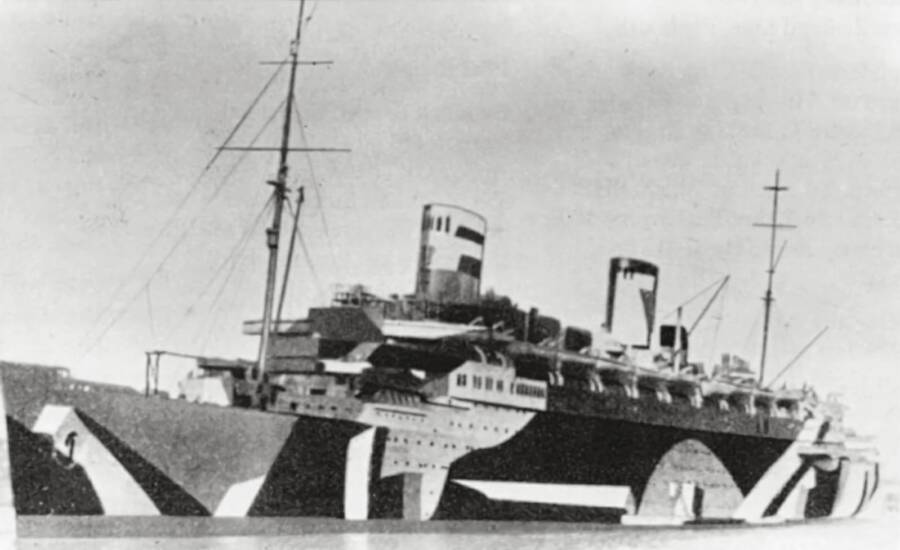
Public DomainThe SS Bremen painted in dazzle camouflage in the early years of World War II.
Churchill, then Great Britain's First Lord of the Admiralty, rejected the idea. He shot the zebra stripes down as "freak methods," ideas that the Admiralty considered to be "of academic interest but not of practical advantage," according to author Peter Forbes.
But Wilkinson, who was a painter and newspaper illustrator outside of his position in the Royal Navy, then piggybacked off of these proposals and refined them. He reportedly came up with an idea during a fishing trip and went to his commanding officer with his theories as soon as he got back.
Wilkinson aimed for dazzle camouflage to make it difficult to gauge a ship's size, speed, and distance, therefore increasing the chances that enemies aboard U-boats would fire torpedoes inaccurately and miss the camouflaged British vessels. He wanted to exploit the fact that German soldiers aimed their torpedoes using periscopes that poked above the water's surface, allowing them to view target ships for only short periods of time.
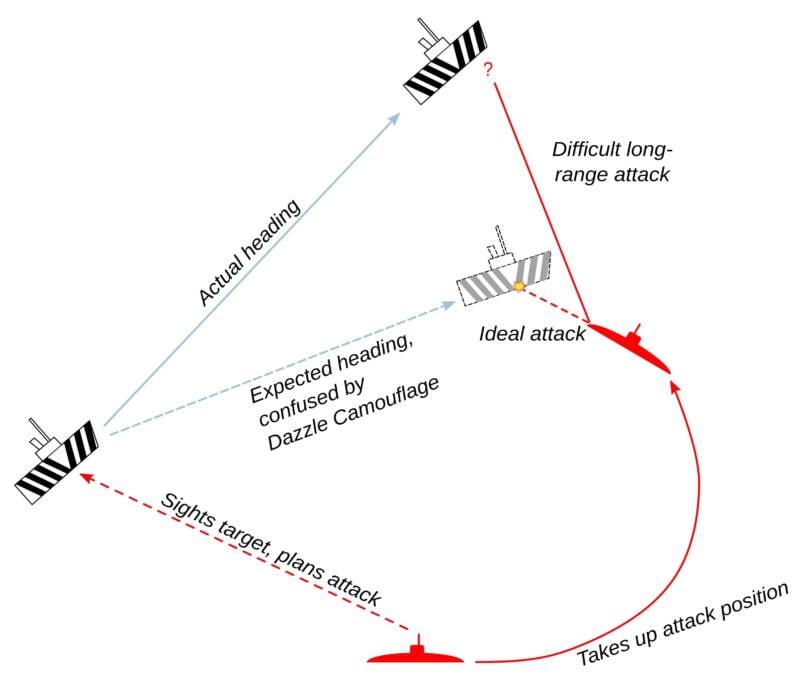
Chiswick Chap/Wikimedia CommonsA diagram illustrating Norman Wilkinson's theory regarding dazzle camouflage.
Typically, after getting a quick glimpse at a ship, a German soldier would have to make many quick decisions and calculations about how to aim the torpedo. Wilkinson hoped that by painting the ships with outrageous dazzle camouflage patterns, enemy soldiers would become confused and miss their target.
There is some support of Wilkinson's idea within nature. Many different plants and animals exhibit bright colors as a survival tactic. Some researchers even suggest that zebras' stripes make it difficult for lions and other predators to ambush herds because they create a field of dizzying and chaotic lines.
So, how would this translate to battleships?
The Royal Navy Adopts The Strange Technique
With the Royal Navy continuing to lose ships to German U-boats, officials decided to give Wilkinson's idea a chance. He was authorized to start a camouflage unit, and he recruited other artists to begin prototyping his designs.
Wilkinson and his team painted model ships in stark black and white stripes and other patterns and placed them on a revolving table. Then, to mimic what a German soldier would see in the situation, they viewed the ships through a periscope. He also used various lights and backgrounds to test the effectiveness of the method at different times of day.
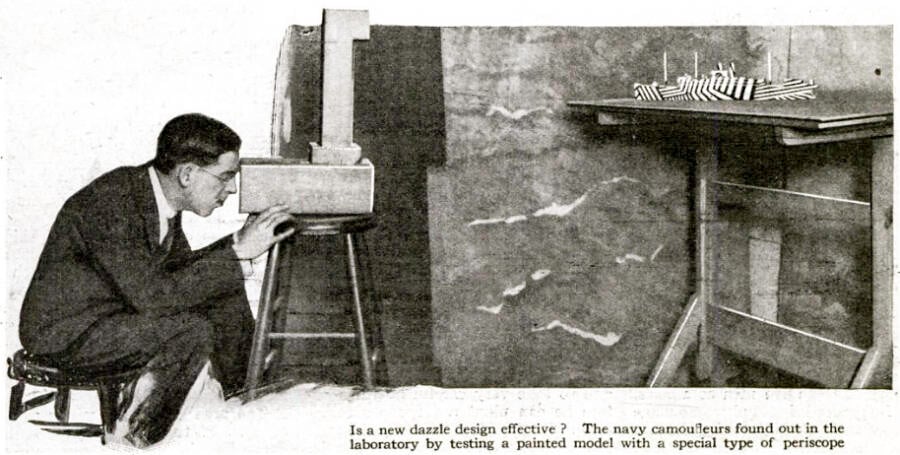
Public DomainAn artist tests the effectiveness of dazzle camouflage on a model ship.
Wilkinson even impressed King George V with his designs when the monarch visited his studio. The king looked through a periscope and stated the striped model ship was traveling southwest — but in reality, it was moving east-southeast.
In 1917, the Royal Navy officially adopted this so-called "dazzle camouflage" technique. Officials ordered that all merchant ships be painted in zebra-like patterns.
The following year, Wilkinson sailed across the Atlantic to meet with Secretary of the Navy Franklin D. Roosevelt and set up a camouflage unit in the U.S.
By the end of the war, more than 2,300 British ships had been painted with dazzle camouflage — and the method may have saved dozens of vessels from destruction.
The Effectiveness Of Dazzle Camouflage Is Still Debated
A postwar commission determined that dazzle camouflage provided slight protection from attack. Of the ships that were sunk by torpedoes during World War I, according to Forbes, 43 percent were camouflaged, suggesting there is a bit of merit to support Wilkinson's claims that the ships confused enemies.
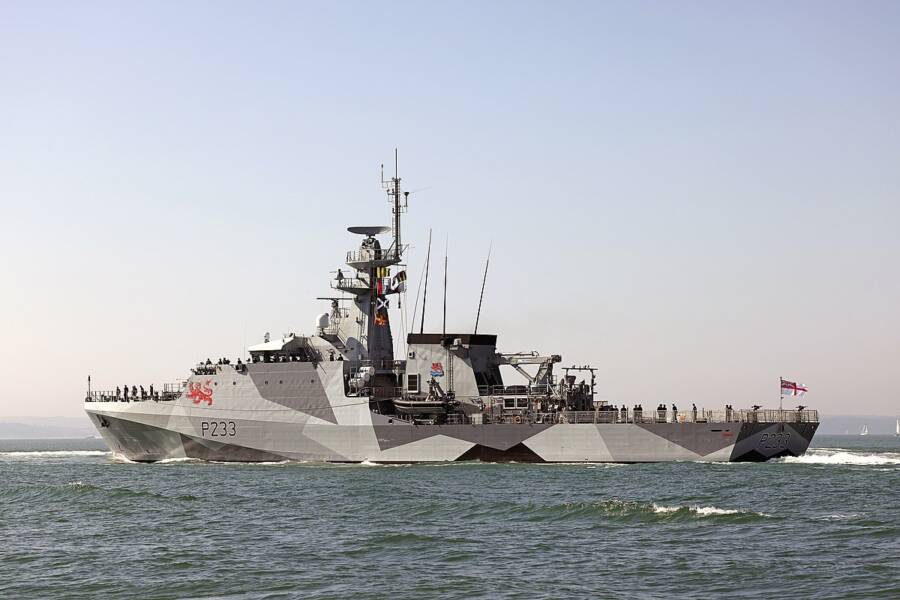
LPhot Lee Blease/UK Ministry of Defence 2021/Wikimedia CommonsIn 2021, the HMS Tamar was covered in dazzle camouflage, making it the first Royal Navy ship since World War II to feature the design.
After the U.S. decided to start practicing the technique as well, there was even more statistical evidence to support its success. In the period between March 1, 1918, and Nov. 11, 1918, 96 merchant ships of the 1,256 total American vessels painted in dazzle camouflage had been sunk.
"None of the camouflaged fighting ships were sunk," Forbes stated.
It's hard to gauge how much of that success is thanks to dazzle camouflage. Historians say that governments used too many variations of patterns and colors to accurately determine the effectiveness of the technique.
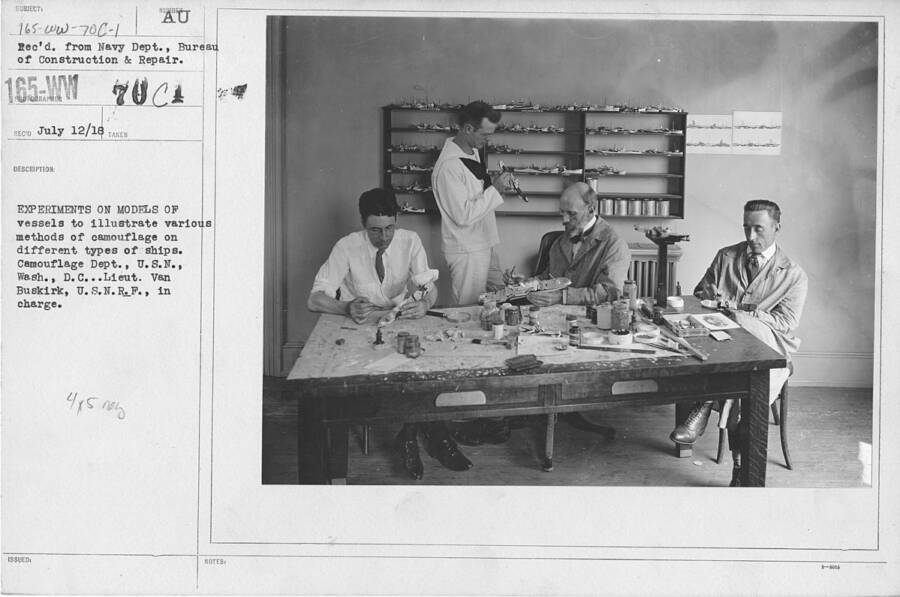
National Archives and Records AdministrationArtists experiment with various dazzle camouflage designs for the U.S. Navy during World War I.
Still, the practice continued during World War II. Even the Germans adopted it. However, the tactic didn't survive much longer. As radar, sonar, rangefinders, and aircraft became more advanced, the success rate suffered, and its use dwindled. However, even with its military use retired, dazzle camouflage has found its way to other fields.
Where Dazzle Camouflage Can Still Be Found Today
During and after the World Wars, dazzle camouflage naturally found its way into the art world, with many paintings and installations featuring the technique.
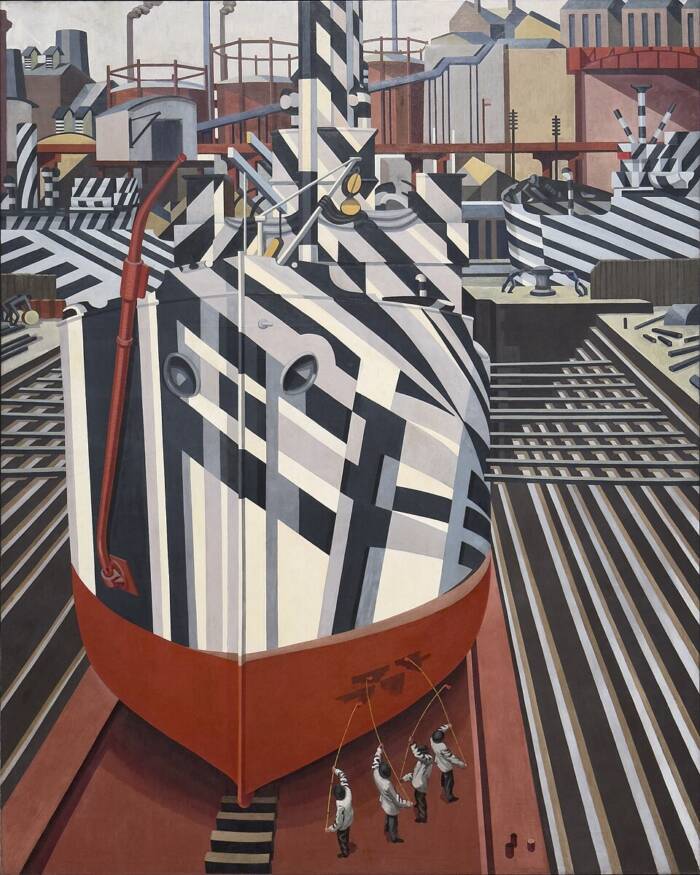
Public DomainThe 1919 oil painting Dazzle-ships in Drydock at Liverpool by British artist Edward Wadsworth.
It's also been used in the world of motorsports. In 2015, the Red Bull Formula 1 team covered the outside of a car in a dazzle camouflage pattern to make it difficult for rival teams to analyze the vehicle's aerodynamics during testing.
References to the method have been seen in other sports, as well, including the Manchester United soccer team, whose jersey for the 2020 season resembled the unique design.

Michael Elleray/Wikimedia CommonsThe Red Bull Formula 1 team used dazzle camouflage on a test car in 2015.
Dazzle camouflage is even still being used on ships. Since 2009, the Sea Shepherd Conservation Society has used the vivid prints on their vessels to make them more visible.
The gallery above features some of the most eye-popping examples of dazzle camouflage, primarily from World War I, when the method saw the most widespread use.
After reading about the history of dazzle camouflage, see how some of Earth's most fascinating creatures conceal themselves with these photos of animal camouflage in action. Then, step into the trenches with these powerful World War I photos.


